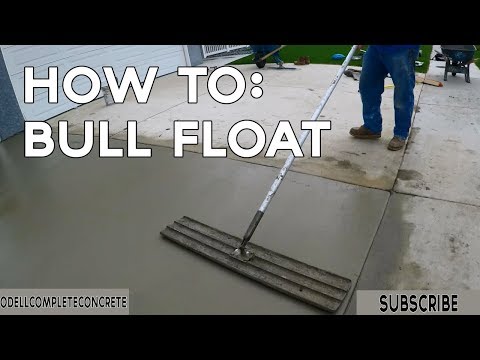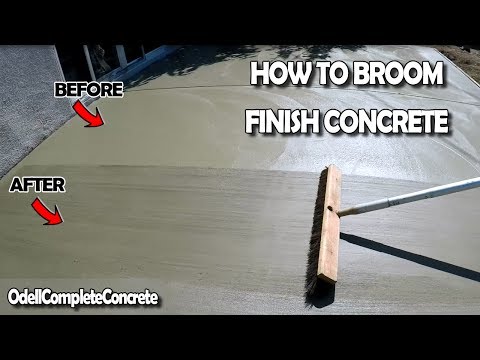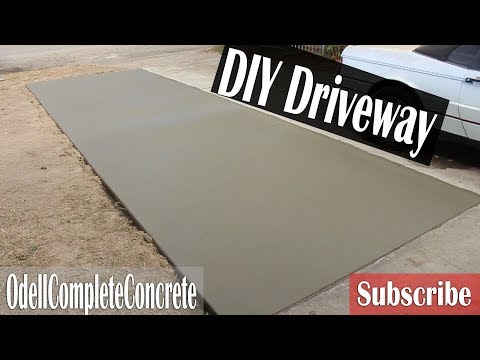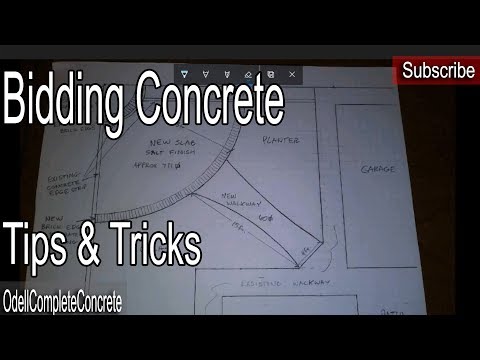Keep debris out of the fresh concrete and use matching tools for joints and edges that look perfect
Hand jointer has a 3/4 inch deep flange with a 1/2 inch radius on each side. The walking jointer that David uses matches this depth and radius, allowing him to switch between tools as needed.
After pouring the slab sections, David used a straight edge to guide a rough line cut to extend from existing sections of the slab, and to serve as a guide for jointing after the concrete cures sufficiently.
To guide the straight edge, he placed a hand jointer in one end of the existing joint, and another hand edger in the far end of the existing joint. Butting a straight edge to those two jointers, and extending it over the new work, provides the correct offset and alignment for the new joint.
After curing enough to evaporate the bleed water, he begins working the joint by setting the jointer into the rough cut and smoothly gliding it along the line, lifting the leading edge and smoothing with the lagging edge.
A standard edger has the same 1/2 inch radius bent into the edge.
- First, use the edger to clean up the edge of the existing slab, but running it along the edge and breaking the new concrete droppings.
- Don't work the loosened droppings into the new slab, use the straight edge of the edger to dig the loose droppings out of the joint.
- Keep the edger flat as you work down the line.
- Clean the edges of the tool tracks with a trowel.
—David Odell owns Odell Complete Concrete in southern California. His YouTube channel is updated regularly. Sometimes you can see him in Professional Remodeler magazine, too.












